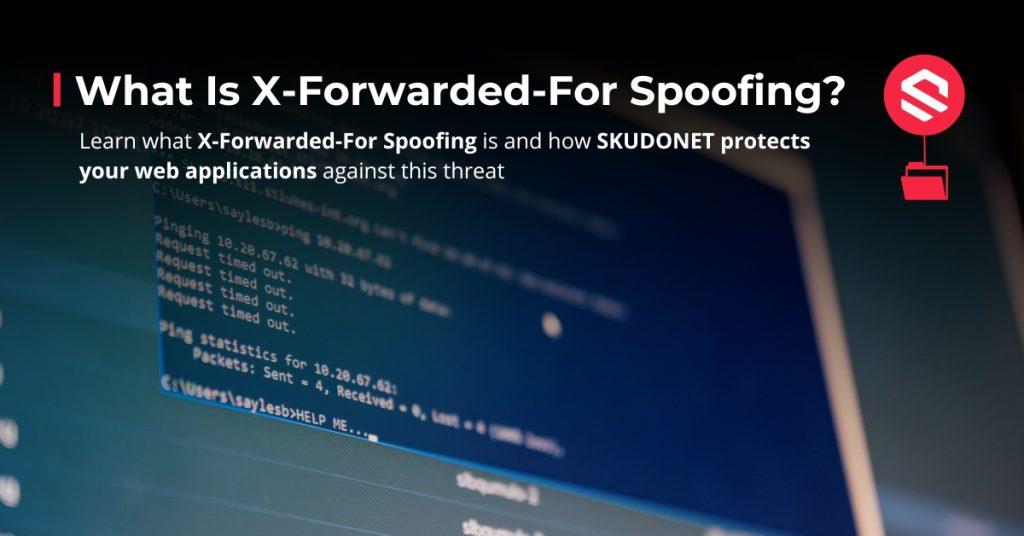Web applications are the backbone of many organizations’ digital infrastructure, but they are also among the most targeted by cybercriminals. Attackers seek to exploit vulnerabilities to access sensitive information, disrupt services, or bypass security measures. Some of the most well-known attacks include SQL injection (SQLi), Cross-Site Scripting (XSS), and HTTP header manipulation.
One lesser-known but equally dangerous method is X-Forwarded-For Spoofing, an attack that utilizes the X-Forwarded-For (XFF) header to forge IP addresses and bypass access controls.
What Is the X-Forwarded-For Header?
In modern architectures, client HTTP requests do not reach the application server directly. Instead, they first pass through reverse proxies, load balancers, or firewalls, which causes the client’s original IP address to be lost in the process. To resolve this, intermediary servers add the X-Forwarded-For header, which records the user’s real IP.
For example, if a client with the IP 192.168.1.1 makes a request through a proxy with the IP 10.0.0.1, the header could look like this:
GET / HTTP/1.1 Host: example.com X-Forwarded-For: 192.168.1.1, 10.0.0.1
This allows web applications to:
- Identify the original IP address of the end user.
- Apply access restrictions based on IP addresses.
- Analyze logs and metrics with accurate traffic data.
However, this header is not verified by default and can be easily manipulated, making it a weak point when security relies solely on IP addresses.
How Does X-Forwarded-For Spoofing Work?
X-Forwarded-For Spoofing is an attack that manipulates the X-Forwarded-For (XFF) HTTP header, which is used to identify the original IP address of a client behind a proxy. An attacker can modify this header to send a fake IP address, making the server believe the request comes from a legitimate source rather than a potentially malicious origin.
This can have several security implications:
- Identity Spoofing: A malicious user can fake their IP address to impersonate a legitimate user and gain access to restricted resources.
- Evasion of Blocking Mechanisms: If an application blocks malicious IP addresses, an attacker can change their XFF value to avoid detection and continue sending requests.
X-Forwarded-For Spoofing poses serious security risks for web applications, ranging from identity theft to data manipulation and bypassing access controls. The lack of validation for the XFF header is a significant threat organizations must address by implementing robust security measures.
SKUDONET Enterprise Edition 10.0.7: Protection Against X-Forwarded-For Spoofing
With its 10.0.7 release, SKUDONET Enterprise Edition strengthens web application security by blocking attempts to manipulate the X-Forwarded-For header.
To prevent these attacks, SKUDONET provides a security directive within its HTTP/S farms that completely removes any X-Forwarded-For headers sent by the client and replaces them with the real IP address obtained at the TCP layer. This means that if an attacker attempts to spoof their IP address by inserting manipulated values in the X-Forwarded-For header, these forged values will be discarded by the load balancer.
Instead of relying on client-provided information, SKUDONET generates a new X-Forwarded-For header based exclusively on the original IP detected in the real connection. This ensures that backend servers always receive a verified and authentic IP address, guaranteeing that activity logs reflect only trusted data.
This new functionality prevents unauthorized access and stops attackers from bypassing IP-based blocking mechanisms through manipulated headers, strengthening security without affecting load balancing performance.
If you’d like to learn more about the new Ignore X-Forwarded-For feature, feel free to contact us or try SKUDONET Enterprise Edition for free for 30 days. Protect your applications with the latest innovations in cybersecurity.


